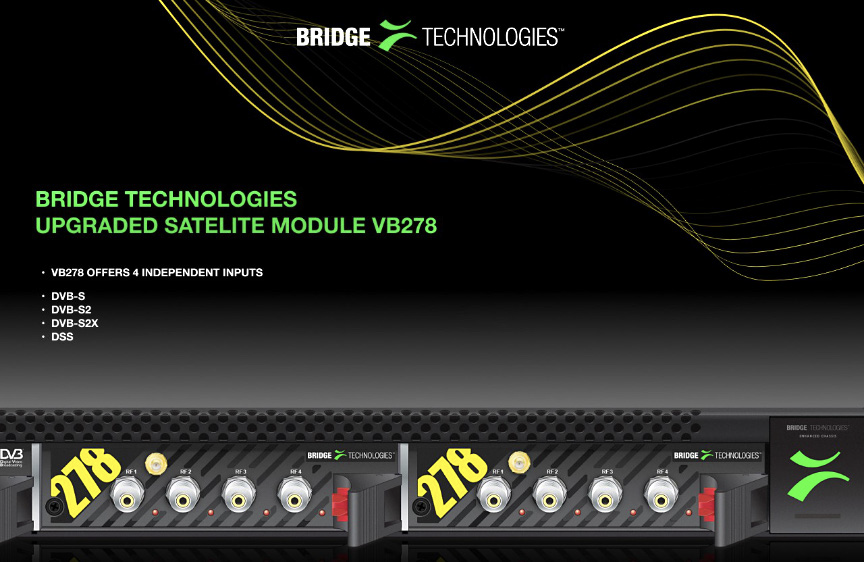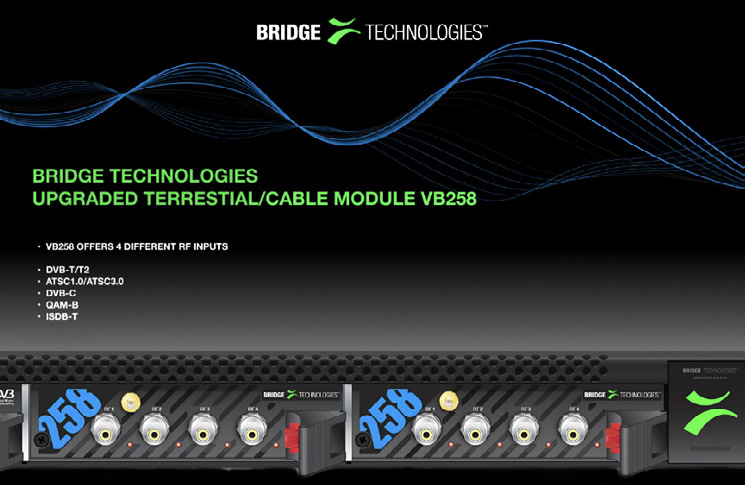In Greek legend, a Chimera is a fire-breathing monster with the head of a lion, a goat’s head protruding from somewhere in the middle, and a serpent emerging from behind. Powerful and terrifying, the Chimera takes the strongest of three animals and combines them to create the ultimate beast of battle.

But in modern speech, the term Chimera has come to mean something wonderful promised for the future, but never likely to be fulfilled. After all, not only is a lion-goat-dragon biologically unlikely, but — if it did exist — the reality is that a three-headed beast pulling in different directions would most likely result in chaos rather than collaboration. Like many hybrids, they are designed to leverage the best of a set of attributes, but all too often result in compromise and incoherence.
However, does that hold true in broadcast? Can a hybrid network deliver all the benefits it promises, or is it a mere myth?
Next-gen broadcast,
by whatever means
necessary…
Bridge Technologies — a Norwegian broadcast monitoring and analytics company — believe that far from a myth, hybrid networks are a necessity, especially in a developing IP broadcast environment. As pioneers of ‘the IP revolution’ for two decades, they foresaw long ago that IP would become fundamental in the broadcast space.
Two things were readily apparent, even back then: the transition to IP would not be simple, nor would it be universal. There would be a range of contexts, and circumstances which meant that IP wouldn’t be ideal for everyone: either because broadcasters needed time to make transitions in a staggered switchover, or because they needed to service customer bases with diverse needs and varying levels of logistical access or infrastructure provision.
In both cases, hybrid systems would be a necessity, with satellite often the key linchpin. However, to operate effectively, they would need to be monitored appropriately.
Making it work.
Together
For this reason, Bridge Technologies developed a monitoring and analytics solution that incorporates probes that are capable of monitoring every type of broadcast network; satellite, terrestrial, cable, IP, OTT — all with the aim of offering insight into every aspect of a broadcast operation, end-to-end, across multiple network types, formats and standards, and all from a single point of access, anywhere in the world.

For systems incorporating satellite contribution and/or direct-to-home (DTH)distribution, the release of the new VB278 (see graphic below) — an upgrade module that can be added to the existing VB120 and VB220 monitoring probe lines — further cements the centrality of Bridge’s monitoring technologies in hybrid setups.
A little box of
(satellite) tricks
Supporting DVB-S, DVB-S2 and DVB-S2X modulation standards, the VB278 works as an addition to the base VB120 and VB220 units, which themselves accommodate a range of network standards, including IP unicasts and multicasts, OTT/ABR streams, and a whole range of RF formats, as well as SRT and ASI.
They incorporate key monitoring features, such as TR 101 290 analysis, IP multicast monitoring, HLS/M-DASH monitoring, TS recording, RF analysis and SRT relay operations — which allows received RF streams to be converted into an IP/UDP stream and made available via the SRT standard, making hard-to- access streams more available to engineers for oversight and diagnostics.
Capacity-wise, the VB120 and VB220 probes gain up to four independent RFL-band inputs per VB278 unit, with the ability to add two modules to any single chassis, thus granting up to eight independent RF inputs which can be used in round-robin operation to monitor a substantial number of transponders.
In addition to DVB-S, DVB-S2 and DVB-S2X, the VB278 supports QPSK, 8PSK and 8/16/32APSK modulation standards, along with DirecTV and AMC mode support. It also includes a range of monitoring metrics and graphs specific

to satellite signal analysis, including Modulation Error Rate (MER), Signal to Noise Rate (SNR), Error Vector Magnitude (EVM), Constellation Diagrams, RS Packet Error, Trend RF graphs, Pilot detection and Energy per information bit/transmitted bit/symbol to noise power spectral density ratio. These clear, intuitive, at-a-glance metrics inform in-the-moment decision making, along with longer term, strategic planning.
Building a monitoring
solution for now
and the future
In addition, the VB278 is fully future-proofed through the incorporation of an expansion port for hardware add-on functionality, which in the near-future will include a Software- Defined-Radio (SDR) plug-on block to facilitate waterfall spectrum analysis and I/Q spectrum triggered recording.

These expanded functionalities will facilitate signal interference detection and intermittent fault analysis, and serve to increase the range, flexibility, functionality, versatility and capacity of their core monitoring solutions, providing for broadcasters who maintain complex, hybrid and evolving networks.

When combined with Bridge’s other add-on modules, including the VB273 for redundancy and the VB258 for the monitoring of DVB-T/T2, ATSC1.0/ATSC 3.0, DVB-C, QAM-B and ISDB-T formats, broadcasters are able to create the perfect custom solution, regardless of the complexity and range of their broadcast infrastructure.
Making myth
a reality
While Bridge’s suite of probes may not look quite as dramatic as a lion, a goat and a serpent, and while they don’t breathe fire (which is actually something of a bonus in industry-grade electronics installations…), they do at least go to prove that, when it comes to broadcast, a chimeric network is far from an unachievable myth: it’s a present and crucially-important reality.


